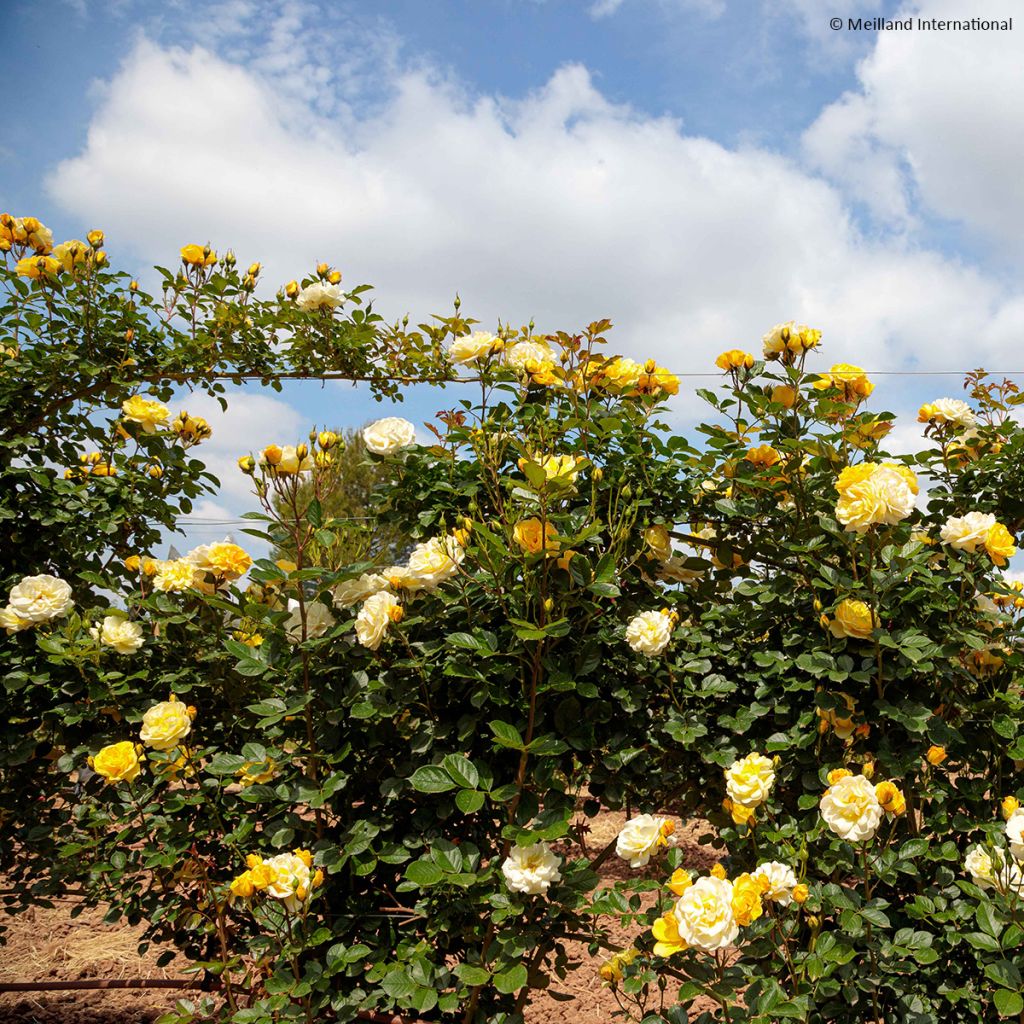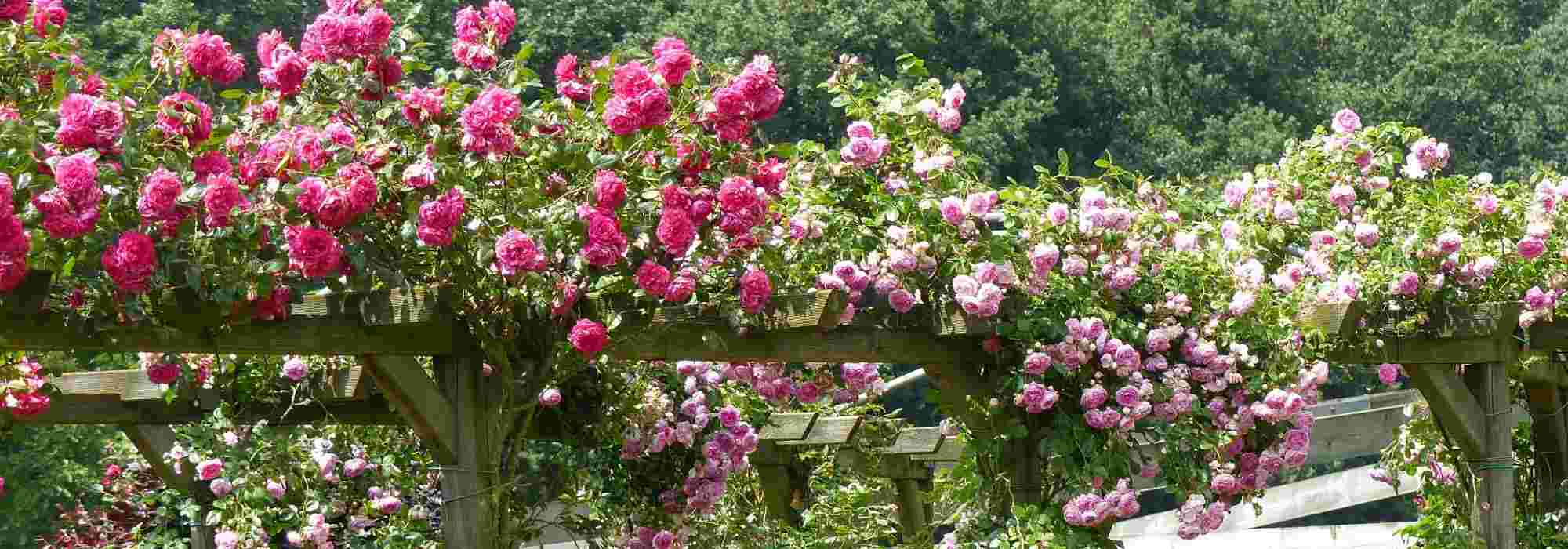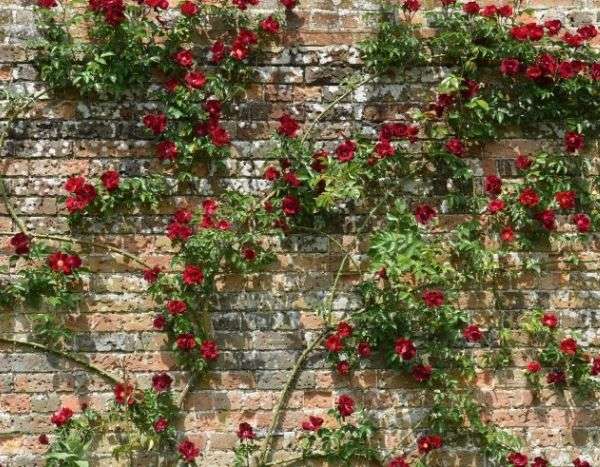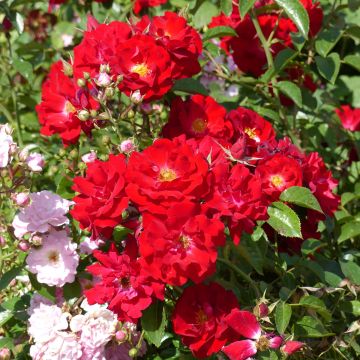

Rosa 'Golden Pareo' - Climbing Rose


Rosa 'Golden Pareo' - Climbing Rose


Rosa 'Golden Pareo' - Climbing Rose


Rosa 'Golden Pareo' - Climbing Rose
Rosa 'Golden Pareo' - Climbing Rose
Rosa Golden Pareo® 'Meipiyou'
Meipiyou
Thanks to the individuals (for order preparation and shipping), the bare-root rose received appears healthy to me. Planted near a wall, I am now patiently awaiting its growth... or not?" Analyse de la traduction : - "Thanks" est une traduction correcte de "Merci". - "individuals" est utilisé pour traduire "personnes" dans le contexte de remercier les personnes impliquées dans la préparation de commande et l'expédition. - "order preparation" est utilisé pour traduire "préparation de commande". - "shipping" est utilisé pour traduire "l'expédition". - "bare-root" est utilisé pour traduire "en racines nues". Il s'agit d'un terme spécifique en botanique pour décrire une plante dont les racines sont dépourvues de terre. - "rose" est utilisé pour traduire "rosier". - "received" est utilisé pour traduire "reçu". - "appears healthy" est utilisé pour traduire "me semble sain". Il s'agit d'une formulation courante pour décrire l'état d'une plante. - "Planted" est utilisé pour traduire "Mis en terre". Il s'agit du participe passé du verbe "planter". - "near a wall" est utilisé pour traduire "proche d'un mur". - "I am now patiently awaiting its growth" est utilisé pour traduire "j'attends maintenant patiemment la reprise". Cette formulation exprime l'attente de la croissance de la plante. - "or not?" est utilisé pour traduire "(ou pas ?)". Il s'agit d'une formulation courante pour exprimer le doute ou l'incertitude. La traduction respecte le sens et le contexte du texte original.
Thierry, 08/12/2023
Special offer!
Receive a €20 voucher for any order over €90 (excluding delivery costs, credit notes, and plastic-free options)!
1- Add your favorite plants to your cart.
2- Once you have reached €90, confirm your order (you can even choose the delivery date!).
3- As soon as your order is shipped, you will receive an email containing your voucher code, valid for 3 months (90 days).
Your voucher is unique and can only be used once, for any order with a minimum value of €20, excluding delivery costs.
Can be combined with other current offers, non-divisible and non-refundable.
Home or relay delivery (depending on size and destination)
Schedule delivery date,
and select date in basket
We guarantee the quality of our plants for a full growing cycle, and will replace at our expense any plant that fails to recover under normal climatic and planting conditions.
Description
The Rose 'Golden Pareo' or 'Meipiyou' is a climbing rose with a harmonious habit and moderate growth that is truly covered in flowers in summer. It is repeat flowering and very floriferous, producing waves of old-fashioned, semi-double roses in a golden yellow color. Very disease-resistant, this rose has glossy dark green foliage that beautifully enhances the flowering, from early summer until the first frosts.
The Rose 'Golden Pareo' or 'Meipiyou' is a creation by Meilland. It is a Hybrid Tea rose. With a moderate size, it reaches a height of 2m (7ft) to 2.5m (8ft) and a width of 2m (7ft) to 3m (10ft). Its flexible and thorny branches are adorned with abundant foliage composed of dark green, glossy, healthy and disease-resistant leaflets. Its generous flowering occurs in close waves from June to October. This rose produces bouquets of 3 to 15 roses with a diameter of 6 to 8cm (2 to 3in), semi-double, with about thirty petals, in the shape of cupped blooms with a ruffled heart. Their colour evokes the sun and summer, a very golden yellow that is both vibrant, warm, and bright.
The Rose 'Golden Pareo' or 'Meipiyou' is an easy plant to succeed with minimal care. It grows harmoniously in well-prepared ordinary soil. It covers arbors, walls, fences, columns, and adapts very well to large pots on balconies or patios. Pair it with summer-flowering clematis, with blue or purple flowers for a striking contrast, or mix it with a table grapevine on a pergola. Use it also at the back of a sunny shrub and perennial flower bed with vibrant flowers like buddleias and delphiniums or phlox.
Plant habit
Flowering
Foliage
Botanical data
Rosa
Golden Pareo® 'Meipiyou'
Rosaceae
Meipiyou
Cultivar or hybrid
Planting and care
Plant your climbing Rose in a rather sunny location. Roses are tolerant, but they won't like excessive limestone and they are more generous in fertile and well-drained soil. They will adapt to any garden if the soil is well-worked and rich. To plant your rose, work the soil by crumbling it well and by putting an amendment at the bottom of the planting hole, such as blood, fish and bone. Water generously after planting to eliminate air pockets. Water regularly for a few weeks to facilitate rooting. At the end of winter, shorten the oldest branches to 3-5 eyes above the ground (at the lowest point), choose an outward facing bud for a more elegant habit. Take advantage of this pruning to remove dead wood and unsightly branches. Prune at an angle above an bud. As the flowering progresses, remove faded flowers, this stimulates the blooming of other buds.
If you plant a climbing or rambling rose next to a living tree, the root system of the rose will compete with that of the already established tree. To control watering, here's a tip: plant the rose in a large container with a perforated bottom at the base of the tree. The tree roots will not penetrate the container for at least a year. Remove the container after one year, for example, by cutting one side without disturbing the root system of the rose. The rose will have had time to develop its root system deeply and will be more resistant.
Roses may appear stained or unsightly at the end of summer. However, it is a natural phenomenon that doesn't harm their development.
Planting period
Intended location
Care
Planting & care advice
-
, onOrder confirmed
Reply from on Promesse de fleurs
Similar products
Haven't found what you were looking for?
Hardiness is the lowest winter temperature a plant can endure without suffering serious damage or even dying. However, hardiness is affected by location (a sheltered area, such as a patio), protection (winter cover) and soil type (hardiness is improved by well-drained soil).

Photo Sharing Terms & Conditions
In order to encourage gardeners to interact and share their experiences, Promesse de fleurs offers various media enabling content to be uploaded onto its Site - in particular via the ‘Photo sharing’ module.
The User agrees to refrain from:
- Posting any content that is illegal, prejudicial, insulting, racist, inciteful to hatred, revisionist, contrary to public decency, that infringes on privacy or on the privacy rights of third parties, in particular the publicity rights of persons and goods, intellectual property rights, or the right to privacy.
- Submitting content on behalf of a third party;
- Impersonate the identity of a third party and/or publish any personal information about a third party;
In general, the User undertakes to refrain from any unethical behaviour.
All Content (in particular text, comments, files, images, photos, videos, creative works, etc.), which may be subject to property or intellectual property rights, image or other private rights, shall remain the property of the User, subject to the limited rights granted by the terms of the licence granted by Promesse de fleurs as stated below. Users are at liberty to publish or not to publish such Content on the Site, notably via the ‘Photo Sharing’ facility, and accept that this Content shall be made public and freely accessible, notably on the Internet.
Users further acknowledge, undertake to have ,and guarantee that they hold all necessary rights and permissions to publish such material on the Site, in particular with regard to the legislation in force pertaining to any privacy, property, intellectual property, image, or contractual rights, or rights of any other nature. By publishing such Content on the Site, Users acknowledge accepting full liability as publishers of the Content within the meaning of the law, and grant Promesse de fleurs, free of charge, an inclusive, worldwide licence for the said Content for the entire duration of its publication, including all reproduction, representation, up/downloading, displaying, performing, transmission, and storage rights.
Users also grant permission for their name to be linked to the Content and accept that this link may not always be made available.
By engaging in posting material, Users consent to their Content becoming automatically accessible on the Internet, in particular on other sites and/or blogs and/or web pages of the Promesse de fleurs site, including in particular social pages and the Promesse de fleurs catalogue.
Users may secure the removal of entrusted content free of charge by issuing a simple request via our contact form.
The flowering period indicated on our website applies to countries and regions located in USDA zone 8 (France, the United Kingdom, Ireland, the Netherlands, etc.)
It will vary according to where you live:
- In zones 9 to 10 (Italy, Spain, Greece, etc.), flowering will occur about 2 to 4 weeks earlier.
- In zones 6 to 7 (Germany, Poland, Slovenia, and lower mountainous regions), flowering will be delayed by 2 to 3 weeks.
- In zone 5 (Central Europe, Scandinavia), blooming will be delayed by 3 to 5 weeks.
In temperate climates, pruning of spring-flowering shrubs (forsythia, spireas, etc.) should be done just after flowering.
Pruning of summer-flowering shrubs (Indian Lilac, Perovskia, etc.) can be done in winter or spring.
In cold regions as well as with frost-sensitive plants, avoid pruning too early when severe frosts may still occur.
The planting period indicated on our website applies to countries and regions located in USDA zone 8 (France, United Kingdom, Ireland, Netherlands).
It will vary according to where you live:
- In Mediterranean zones (Marseille, Madrid, Milan, etc.), autumn and winter are the best planting periods.
- In continental zones (Strasbourg, Munich, Vienna, etc.), delay planting by 2 to 3 weeks in spring and bring it forward by 2 to 4 weeks in autumn.
- In mountainous regions (the Alps, Pyrenees, Carpathians, etc.), it is best to plant in late spring (May-June) or late summer (August-September).
The harvesting period indicated on our website applies to countries and regions in USDA zone 8 (France, England, Ireland, the Netherlands).
In colder areas (Scandinavia, Poland, Austria...) fruit and vegetable harvests are likely to be delayed by 3-4 weeks.
In warmer areas (Italy, Spain, Greece, etc.), harvesting will probably take place earlier, depending on weather conditions.
The sowing periods indicated on our website apply to countries and regions within USDA Zone 8 (France, UK, Ireland, Netherlands).
In colder areas (Scandinavia, Poland, Austria...), delay any outdoor sowing by 3-4 weeks, or sow under glass.
In warmer climes (Italy, Spain, Greece, etc.), bring outdoor sowing forward by a few weeks.

















































